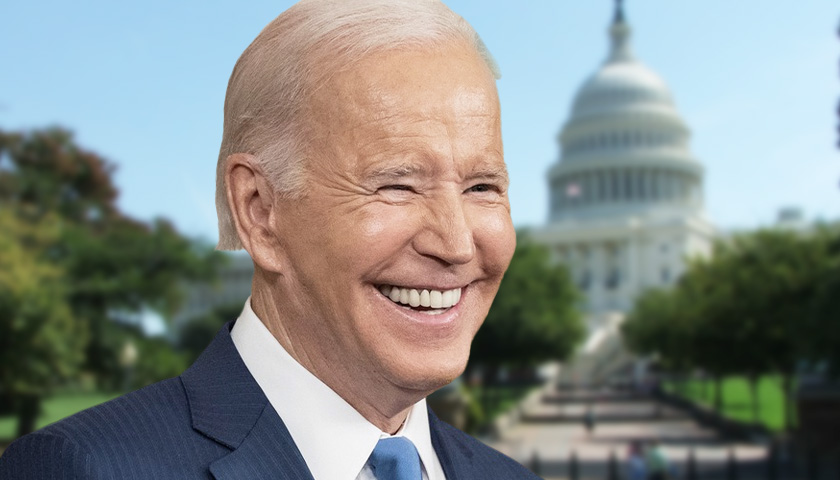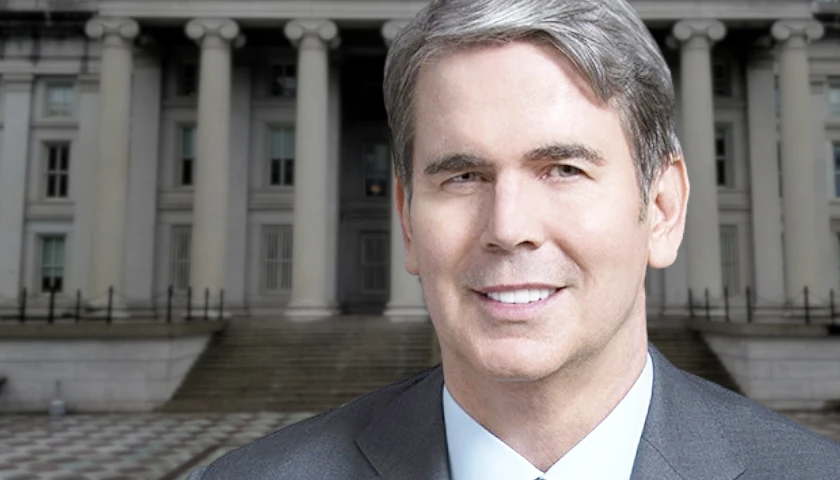by Mark Hemingway
President Biden has promised that the $740 billion Inflation Reduction Act, signed into law this August, will “lower the cost of prescription drugs and health care for families” thanks to provisions that allow the Department of Health and Human Services to negotiate the price of some medications directly with pharmaceutical companies.
Critics are decidedly less enthusiastic. They say the IRA’s new drug price provisions are more akin to government price-fixing than negotiation – an unprecedented power grab in health care.
As of Oct. 1, the new law requires drugmakers to pay rebates to Medicare if the costs of certain drugs rise faster than annual inflation. If the government determines that the price of a drug increased 6% and the inflation rate that year was 4% – regardless of how or why the price rose – the manufacturer will be required to pay the government back the 2% difference in the price. The law does not provide an appeals process.
And starting in 2026, the IRA permits the government to “negotiate” a “maximum fair price” for certain prescription drugs purchased by the Medicare program. Under the new law, “negotiation” means the HHS determines the price it wants to pay for a specified medicine. Drug manufacturers can counteroffer, but if HHS doesn’t budge, the pharmaceutical company has no choice but to accept that price. Otherwise, the IRS will be empowered to slap the company with a “noncompliance” excise tax of up to 1,900% of the medicine’s daily U.S. revenue until the manufacturer sells the drug at the price HHS has set or withdraws from the market.
“I don’t believe that’s negotiation,” said Matt Wetzel, a Washington, D.C. lawyer at Goodwin Procter who specializes in health care policy. “This is the opportunity to give one counteroffer and then a price cap is generated.”
Cory Andrews of the Washington Legal Foundation, a free-market advocacy group in Washington, D.C., was even more blunt: “No matter how obscured by a regulatory haze, strong-arm robbery is not a ‘negotiation’ for a ‘fair’ price.”
HHS did not respond to a request for comment on the new drug pricing provisions. Rep. Curt Schrader of Oregon, a Democrat who claimed a central role in the measure’s bipartisan passage after his early objections, also declined to comment.
Although the new rules will only cover a relatively small number of high-priced medicines, critics say this new authority could set a far-reaching precedent for Medicare, which purchases more than 30% (roughly $130 billion per year) of all prescription drugs in the United States. While raising constitutional issues, it may also hinder the development of new drugs.
In October, HHS produced a report to promote its new powers to compel rebates for drugs that exceed inflation, emphasizing that more than 1,200 drugs rose faster than the cost of inflation between July 2021 and July 2022, and the average price increase was 31%.
The powerful pharmaceutical industry, whose deep-pocketed lobbyists have a reputation for very rarely suffering legislative defeats, appears to be keeping its powder dry so far. Brian Newell, a spokesman for the drug manufacturer advocacy group Pharmaceutical Research and Manufacturers of America (PhRMA), said that for now the industry is evaluating its legal options.
If a drug manufacturer objects to the price dictated by HHS or thinks the government has unfairly calculated the inflation rebates, it has little legal recourse even if it can be demonstrated that the price the government wants them to accept is below manufacturer cost. The law also contains language prohibiting judicial or administrative review of whether the drug is eligible for negotiation or the price that is set. The IRA also imposes fines of up to $1 million a day if the company fails to provide HHS with any information it demands. And if a drug company is determined to have “knowingly” provided inaccurate information to the government, it can be fined up to $100 million.
The only way a manufacturer can exit a negotiation is if it chooses to withdraw all its products from being purchased by Medicare and Medicaid. Pulling out would be a financially ruinous move since those programs are far and away the largest buyers of prescription drugs in America.
Andrews called the price dictates radical and unprecedented in American history. “Apart from one or two rare wartime exceptions, due process requires that a party deprived of property must have the opportunity to be heard,” he said. “The IRA’s bar on administrative  or judicial  review is an unprecedented  deprivation of due process.”
In addition, the law gives Health and Human Services three years’ leeway. “CMS and HHS, for purposes of the statute will issue guidance through program instructions for the first three years and not through Notice of Proposed Rulemaking,” Wetzel said. “In other words, for the first three years, CMS has sort of full latitude to implement the program as it sees fit without public input and without stakeholder input or feedback, as is typically the case when implementing regulations.” Wetzel added that CMS, the Center for Medicare and Medicaid Services, the agency within HHS responsible for administering the law, has already submitted a plan to Congress noting that implementing the law will require adding six new divisions to the agency and 95 new federal employees.
‘Price Negotiation’ Redefined
Containing rising drug costs has long been a priority for reining in Medicare spending. The program has $103 trillion in unfunded liabilities, more than three times the national debt, according to the Congressional Research Service.
Democrats have long sought to leverage the government’s buying power to drive down drug prices as a way to address both Medicare spending and overall health care costs without having to make structural reforms to a popular social program. According to the Kaiser Family Foundation, prescription drugs “account for 10% of national health spending and nearly 20% of health benefit costs for large employers.”
Government negotiations over Medicare drug prices were legally forbidden until the passage of the IRA. In 2003, Congress passed the “Medicare Prescription Drug, Improvement, and Modernization Act” which created Medicare Part D (Medicare’s prescription drug benefit program). As part of that legislation, Congress included what’s become known as Medicare’s “noninterference” clause which states “the [HHS] Secretary may not interfere with the negotiations between drug manufacturers and pharmacies,” along with forbidding government intervention with other relevant entities that play a role in the drug market. According to PhRMA, the purpose of the noninterference clause was to preserve market competition within the Medicare program which helps drive prices down.
Since then, congressional Democrats had been attempting to repeal the noninterference clause, and it’s long been clear “drug price negotiation” was being redefined to include price controls and other regulatory inducements. Most notably, in 2007 the House passed the “Medicare Prescription Drug Price Negotiation Act of 2007,” but the legislation died after Senate opposition and President George W. Bush’s threatened veto. According to The New York Times, Republicans opposed government drug price negotiations because “private insurers and their agents, known as pharmacy benefit managers, were already negotiating large discounts for Medicare beneficiaries.”
This view was affirmed by the nonpartisan Congressional Budget Office, which concluded that allowing HHS to negotiate the price of drugs would have a “negligible effect” on federal spending. However, in 2007 the CBO told Oregon Senator Ron Wyden, a longtime champion of Medicare drug price negotiation, that coercive tactics might produce the results Democrats wanted to see. “Negotiation is likely to be effective only if it is accompanied by some source of pressure on drug manufacturers to secure price concessions,” said the CBO. “The authority to establish a formulary, set prices administratively, or take other regulatory actions against firms failing to offer price reductions could give the Secretary the ability to obtain significant discounts in negotiations with drug manufacturers.”
Given the statutory language forbidding judicial or administrative review, the pharmaceutical industry’s options are limited if it chooses to fight. Legal experts say the Constitution – which prohibits the government from taking property without just compensation in the Fifth Amendment and from imposing “excessive fines” under the Eighth Amendment – may provide the best grounds for a challenge, especially if HHS uses its new powers aggressively.
Slowing New Drug Development
“Under the IRA, the offense may be no more than a manufacturer’s hesitation to agree to give away its product at far-below-market prices,” Andrews said. “The IRA’s eye-popping, nine-figure fines bear no conceivable connection to any government injury.” A conservative Supreme Court, he said, might be sympathetic to these arguments. In the 2012 case NFIB v. Sebelius, the high court rebuked the government for a similarly punitive legislative scheme. In that instance, the federal government had framed the decision of state governments to expand the Medicaid program as a choice, even though it threatened to withdraw states’ existing Medicaid funding if they did not agree to the costly expansion. Chief Justice John Roberts described that arrangement as a “gun to the head.”
There are also warning signs coming from the pharmaceutical industry that the new law could slow the development of new drugs. In late October, Alnylam, a biotech company based in Cambridge, Massachusetts, announced it was pulling one of its drugs out of a clinical trial because it needed “to evaluate impact of the Inflation Reduction Act.” The snag was that the drug Alnylam was evaluating as a treatment for a rare eye disorder called Stargardt disease was already approved to treat a different condition, amyloidosis. According to the new law, drugs that treat only one rare disease are exempt from being forced into price negotiations. If the drug were found to be effective for two diseases, Alnylam might be forced into selling it for a reduced or unprofitable price.
Alnylam seems unlikely to be the only company to pull a potential cure or treatment off the market in an attempt to avoid price controls. A study published by the University of Chicago in November concluded that the IRA’s price controls will result in the pharmaceutical industry spending $663 billion less on research and development through 2039, which will result in 135 fewer new drugs making it to market. In contrast, the CBO estimates that the decline in research and development spending would result in only five fewer drugs being produced during that time span.
Regardless of how much price controls impact innovation, congressional Democrats have produced reports arguing that pharmaceutical companies have engaged in anticompetitive behavior and blatant price-gouging. The IRA’s price controls seem to be a direct response to this concern. The law specifically caps Medicare insulin prices, which have increased 600% in the last 20 years and are significantly higher in America than anywhere else in the developed world. But despite headline-grabbing examples of rising drug costs, the industry also claims that the government has overstated the problems of rising pharmaceutical costs to justify regulation.
PhRMA argues that focusing on the cost of only 1,200 of the more than 20,000 prescription drugs available in the U.S. doesn’t paint the full picture. “If there’s one thing in all the inflation data that hasn’t been rising as fast as the rate of inflation, it’s actually drug prices,” Newell said. “Overall drug prices have been going up roughly 1% to 2% while the economy has been running hot on inflation.” From June 2021 to June 2022, roughly the same time period covered by the HHS report, the government’s official Consumer Price Index data affirms Newell, noting that drug prices rose somewhere between 0.1 and 2.5%. HHS did not respond to a request for comment on why its study on drug prices rising faster than inflation focuses only on a narrow subset of the prescription drug market.
But big-picture inflation data can also be misleading. Relatively inexpensive, generic medicines account for about 90% of the prescriptions filled, while a small number of expensive specialty drugs – defined as those with a price of at least $830 per month and mostly produced by major pharmaceutical companies – eat up a huge share of government spending. According to a 2019 CRS report, “specialty drugs are about 1% of Part D prescriptions but account for more than 25% of spending, up from 6% in 2007.” The fact that such a small percentage of drugs are disproportionately expensive is one reason why Democrats think giving HHS the power to set prices for as few as 20 widely used and expensive specialty drugs could help lower overall costs.
At the same time, PhRMA spokesperson Newell expresses frustration that the new legislation focuses so narrowly on lowering prices rather than examining the incentives that raise costs for drug companies. While Congress points the finger at pharmaceutical companies, they’re not addressing the fact high drug prices are also created by a heavily regulated pharmaceutical market mandating complex interactions between drug companies, insurers, pharmacies, hospitals, government rebates, and federal drug discount programs.
“We haven’t really looked at this  insuranc e system that we have today and what’s really driving what patients pay at the pharmacy,” says Newell, adding, “There  are  things in the system today that just aren’t working. At the end of day, we haven’t fixed the fact that years from now patients  with insurance  will show up at the pharmacy and get stuck with a bill that they can’t afford.”
– – –
Mark Hemingway reports on the key institutions shaping public life, from lobbying groups to federal agencies to elections, for RealClearInvestigations. His writing has appeared in USA Today, Wall Street Journal, MTV.com, and The Weekly Standard.
Photo “President Joe Biden” by President Joe Biden. Background Photo “U.S. Capitol” by The U.S. National Archives.




